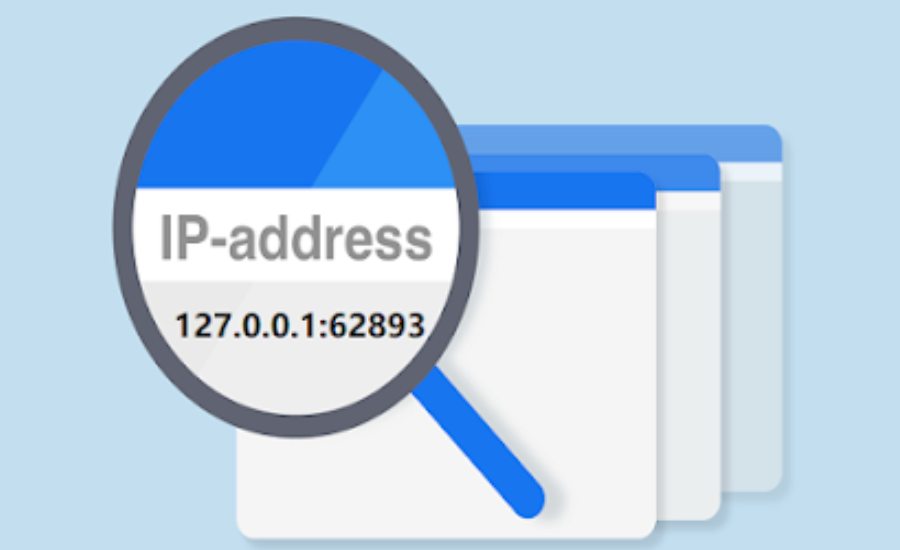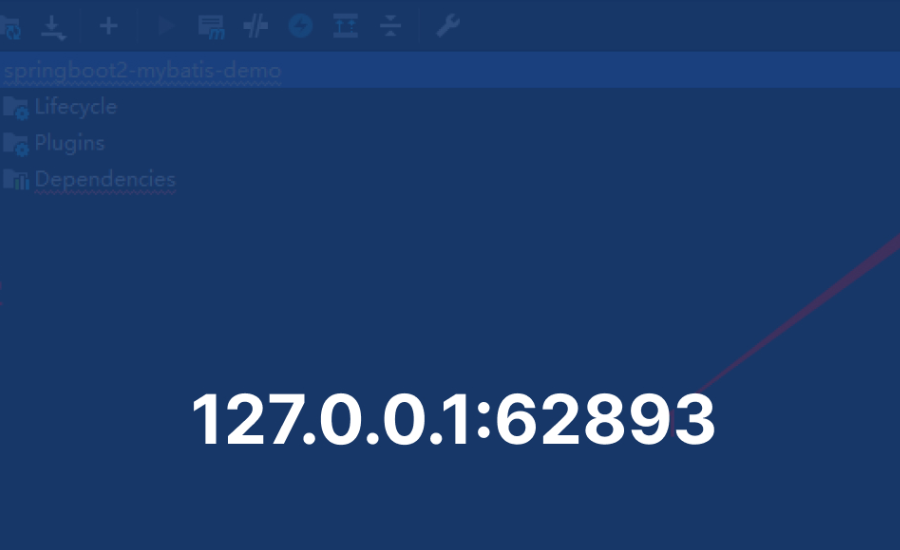Have you ever stumbled upon the cryptic sequence 127.0.0.1:62893 while working on your computer? At first glance, it might seem confusing, but a deeper understanding of its components can provide valuable insights! This message, often seen as “Disconnected from the target VM, address: 127.0.0.1:62893,” typically appears during the development process, signaling an important aspect of your system’s networking functionality.
In this article, we will explore the meaning behind 127.0.0.1:62893, explain its role in your system, and offer practical solutions to common errors associated with it.
Decoding 127.0.0.1:62893: What It Really Means

To understand what 127.0.0.1:62893 signifies, let’s break it down into two key parts:
127.0.0.1: The Localhost IP Address
- This portion of the code refers to a special IP address known as “localhost.” In essence, it points back to your own computer, creating an internal loopback that enables communication within the device itself.
62893: The Port Number
- The number 62893 represents a port, which acts as a communication gateway for various applications. While not as commonly used as some other ports, it is sometimes linked to Memcached, a system designed for caching data.
Exploring IP Addresses: Essential Components of Internet Communication
IP addresses are akin to the digital version of physical home addresses, directing data where it needs to go in the vast online world. Two primary versions of IP addresses exist: IPv4 and IPv6.
IPv4 and IPv6: The Evolution of IP Addresses
- IPv4 addresses, such as 127.0.0.1, are part of an older system that is becoming increasingly scarce due to the growing number of internet-connected devices.
- IPv6 addresses, like 2001:0db8:85a3:0000:0000:8a2e:0370:7334, are a newer system that provides a much larger pool of addresses, ensuring that the internet can continue to expand.
Private vs. Public IP Addresses
- Private IP Addresses: These are used for local communication within a single device or network, such as 127.0.0.1, ensuring that data remains within the confines of your system.
- Public IP Addresses: In contrast, public IP addresses enable global communication, allowing devices to interact over the broader internet.
The Role of Port Numbers: Channels for Data Transmission
Port numbers can be compared to TV channels, directing data to the appropriate application on your device. Each port number is associated with a specific service, ensuring that data reaches the correct destination.
Common Uses of Localhost in Development

Localhost is a versatile tool used in various scenarios, particularly in software development and testing. Here are some common uses:
- Local Development: Developers often use localhost to test applications in a secure, controlled environment before making them publicly available on the internet.
- Software Demonstrations: Localhost is also used in software demos and trials, allowing users to explore features without needing an internet connection.
Tools for Managing Localhost and Ports

Several tools are available to help manage and monitor localhost and port settings effectively:
- Wireshark: This network protocol analyzer is useful for troubleshooting network issues and monitoring network traffic.
- PortQry: A command-line tool that queries open ports, assisting in diagnosing port-related problems.
- Nmap: Often used for network discovery and security auditing, Nmap allows users to scan networks and identify open ports.
The Benefits of Using 127.0.0.1:62893
Utilizing 127.0.0.1:62893 offers several advantages in development and networking:
- Secure Development Environment: Localhost allows developers to test and refine applications in a controlled space, reducing the risk of exposing untested code to the internet.
- Networking Education: It aids in understanding networking concepts such as client-server communication and TCP/IP protocols.
- Enhanced Security: By monitoring port activity on localhost, developers can detect unauthorized access attempts, thereby strengthening overall system security.
- Streamlined Debugging: Localhost helps identify network-related issues, making the debugging process more efficient and ensuring better application performance.
- Isolated Testing Environment: Localhost provides a segregated environment, preventing conflicts with other applications and ensuring smooth functionality.
Troubleshooting Issues with 127.0.0.1:62893

If you encounter an error related to 127.0.0.1:62893, here’s how to troubleshoot:
Identifying the Problem
- Ensure the Service is Active: Verify that the software or service you’re trying to access is running correctly. Whether it’s a web server or a development tool, make sure it’s up and functioning.
- Verify the Port Number: Double-check that the application is using port 62893. Sometimes, connection issues arise due to attempts to connect to the wrong port.
- Check Firewall Settings: Your firewall might be blocking port 62893. Review the firewall settings to allow traffic through this port.
Resolving the Problem
- Start the Service: If the service isn’t running, start it using the appropriate script or command.
- Change Port Numbers: If there’s a conflict or if port 62893 is occupied, consider configuring the application to use a different port. This change is usually made in the program’s configuration settings.
- Configure the Firewall: Create an exception in your firewall to permit communication on port 62893. The process varies by operating system:
- Windows: Navigate to Control Panel > Windows Defender Firewall > Advanced Settings > System and Security > Inbound Rules, then add a new rule for port 62893.
- Mac/Linux: Adjust the firewall settings using Terminal commands, similar to Linux’s iptables.
- Ensure Proper Application Configuration: Some programs require specific settings to function correctly. Consult the application’s documentation to ensure all necessary configurations are in place.
- Employ Network Diagnostic Tools: Utilize utilities such as lsof (on Unix/Linux) or netstat (on Windows) to check if any applications are actively using port 62893. If the port appears to be free, it may indicate a problem with the program’s configuration.
Resolving the “Disconnected From The Target VM at Address 127.0.0.1:62893” Error
If you receive the “Disconnected From The Target VM, Address: 127.0.0.1:62893” error while using development tools like VS Code, it indicates that the debugger was unable to connect to the target machine at the specified port. To resolve this issue:
- Confirm Service Status: Ensure that the application or service is running smoothly without any problems.
- Verify Port Configuration: Check that the application’s settings match the assigned port number (62893).
- Adjust Firewall Settings: Make sure that your firewall isn’t blocking access to port 62893 for local connections.
Public Exposure of Port 62893: Is It Safe?

Generally, exposing port 62893 to the public is unsafe for several reasons:
- Denial-of-Service (DoS) Attacks: Opening port 62893 can make your system vulnerable to DoS attacks, where attackers flood your system with traffic, leading to crashes or unresponsiveness.
- Risk of Unauthorized Access: Allowing public access to port 62893 opens the possibility for anyone with an internet connection to attempt to connect to your Memcached server, raising the risk of unauthorized access.
- Security Flaws: If there are vulnerabilities in the service running on port 62893, attackers could exploit them to gain access to your system or execute malicious actions.
For optimal security, it is recommended to keep port 62893 restricted to internal use, protecting your system from potential threats.
Stay in the loop for upcoming updates and alerts! u-intrepid-cat-6787
FAQs about 127.0.0.1:62893 and Localhost Testing
Q: What does 127.0.0.1:62893 represent?
A: 127.0.0.1:62893 is an address combination used in computer networking. Here, 127.0.0.1 refers to the localhost IP address, indicating that the connection is internal to the machine. The port number 62893 is used by various applications to communicate through a specific gateway or channel.
Q: How can I fix issues with port 62893?
A: To resolve issues, you should:
Ensure that the service using port 62893 is active and running.
Verify that the port number in your configuration matches 62893.
Check and adjust firewall settings to allow traffic on port 62893.
Consider using network diagnostic tools to troubleshoot port-related issues.
Q: What tools can help manage and monitor localhost and ports?
A: Useful tools for managing localhost and ports include:
Wireshark: For network traffic analysis and troubleshooting.
PortQry: To query and diagnose open ports.
Nmap: For network discovery and security auditing.
Conclusion
The sequence 127.0.0.1:62893 plays a crucial role in localhost and port management, where 127.0.0.1 refers to the internal IP address for internal communication within your computer, and 62893 is a port number used by applications. Understanding IP addresses and port numbers is essential for effective networking and development. Localhost offers a secure testing environment, allowing developers to work on applications without exposing them to the internet. Tools like Wireshark, PortQry, and Nmap are valuable for managing and troubleshooting localhost and ports. When issues such as connection errors or port conflicts arise, it is important to follow troubleshooting steps, including checking service status, verifying configurations, and adjusting firewall settings. Public exposure of ports like 62893 presents significant security risks and should be avoided to safeguard your system from potential threats.
Read Next: Incredible Wave

